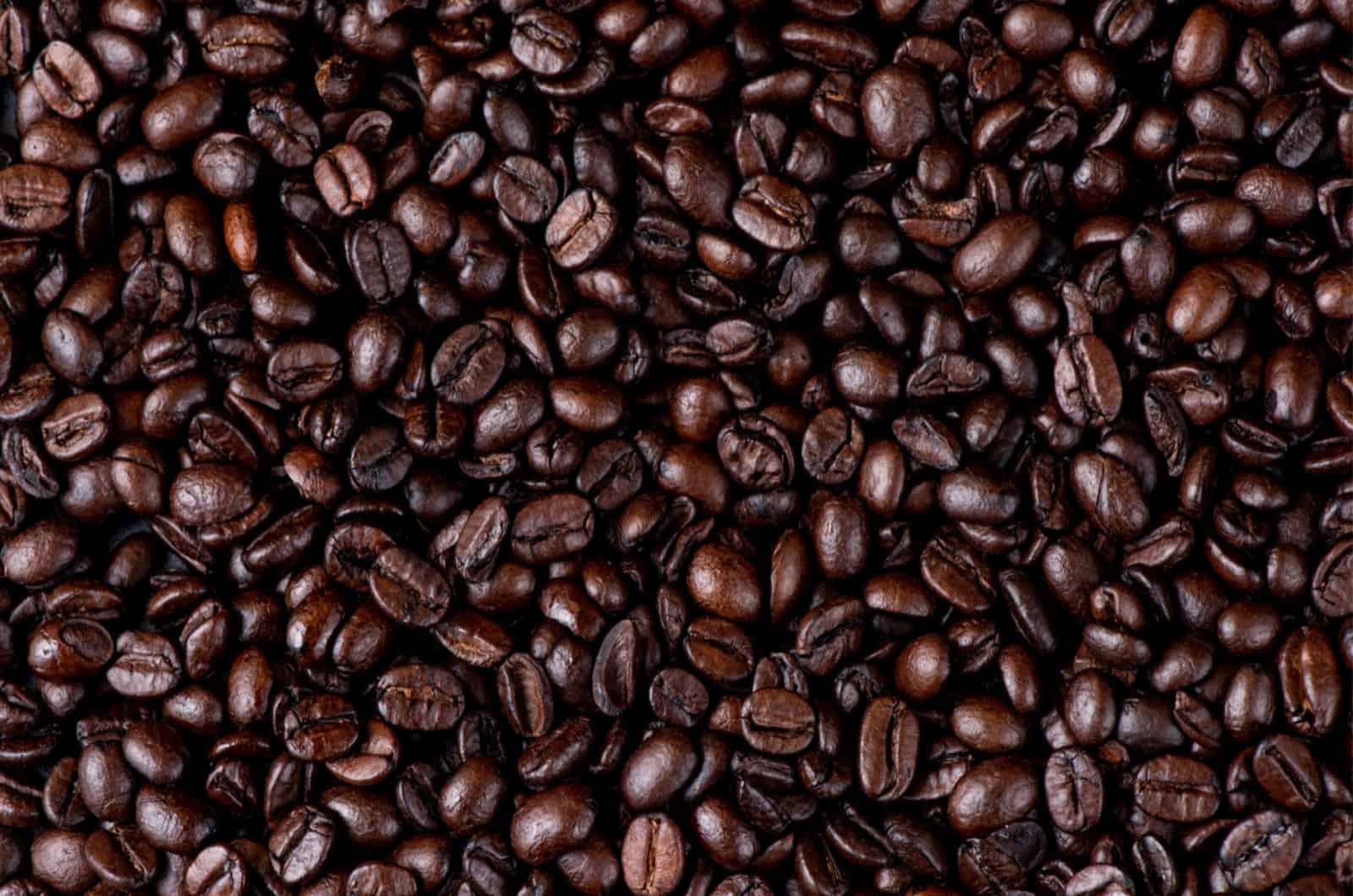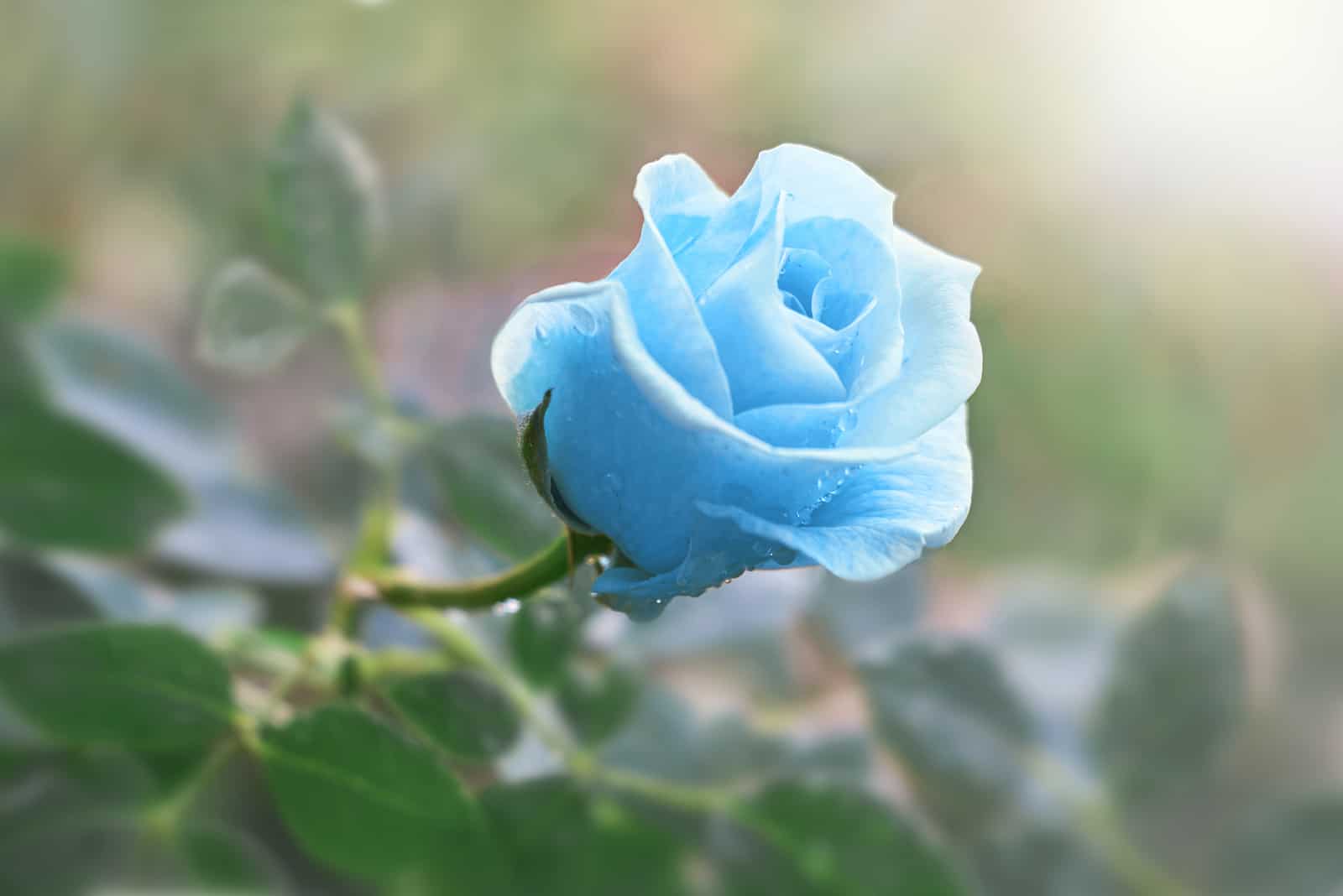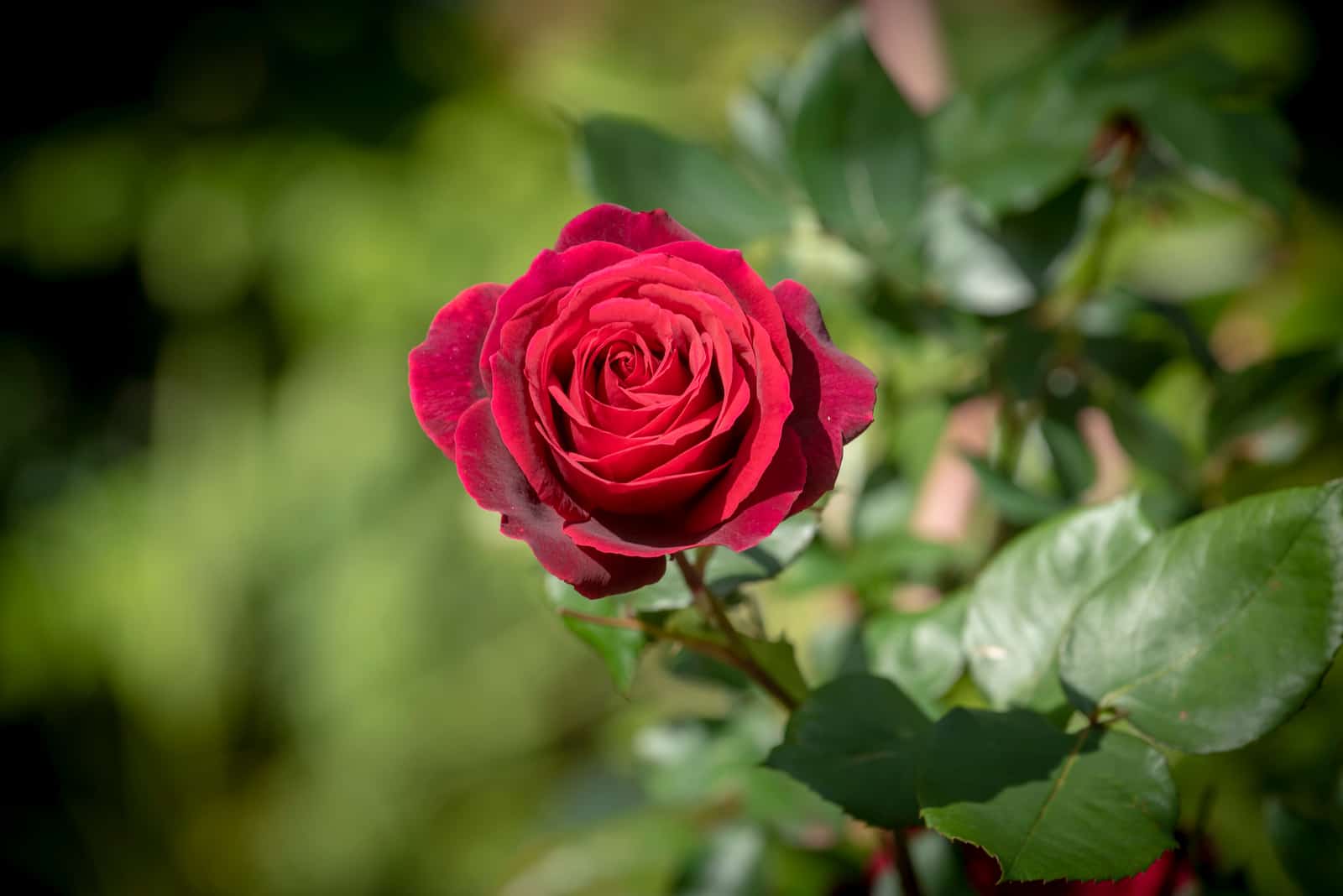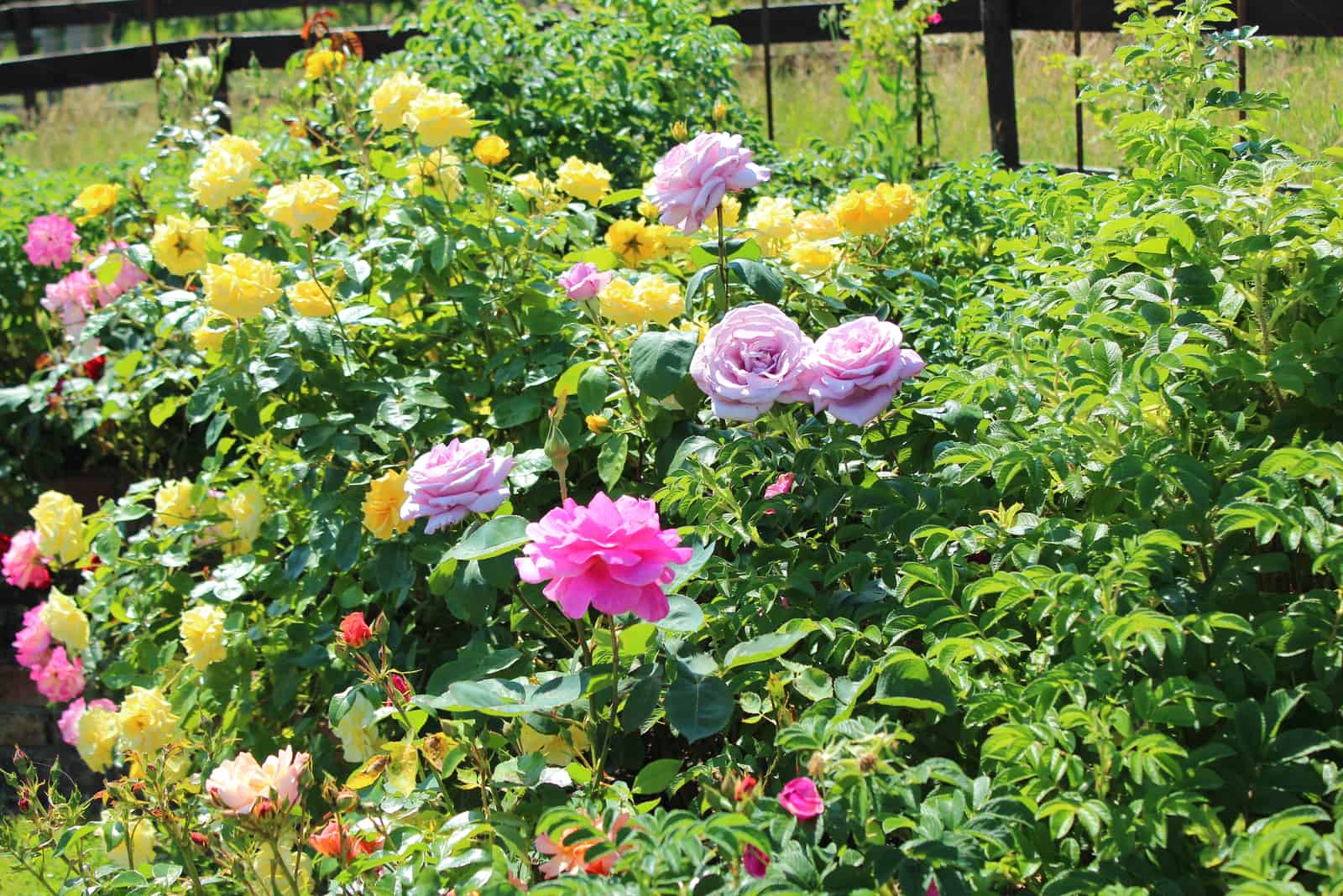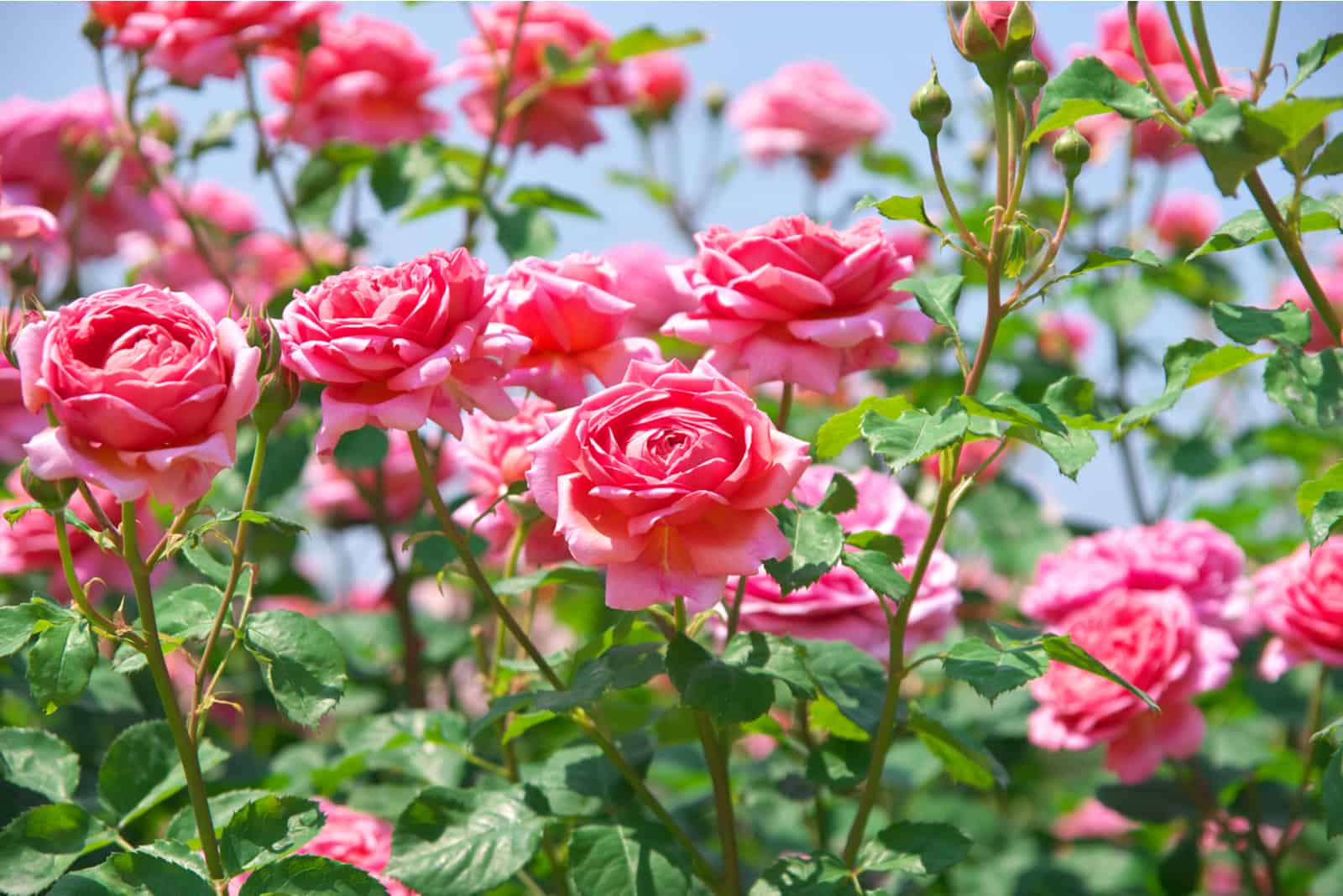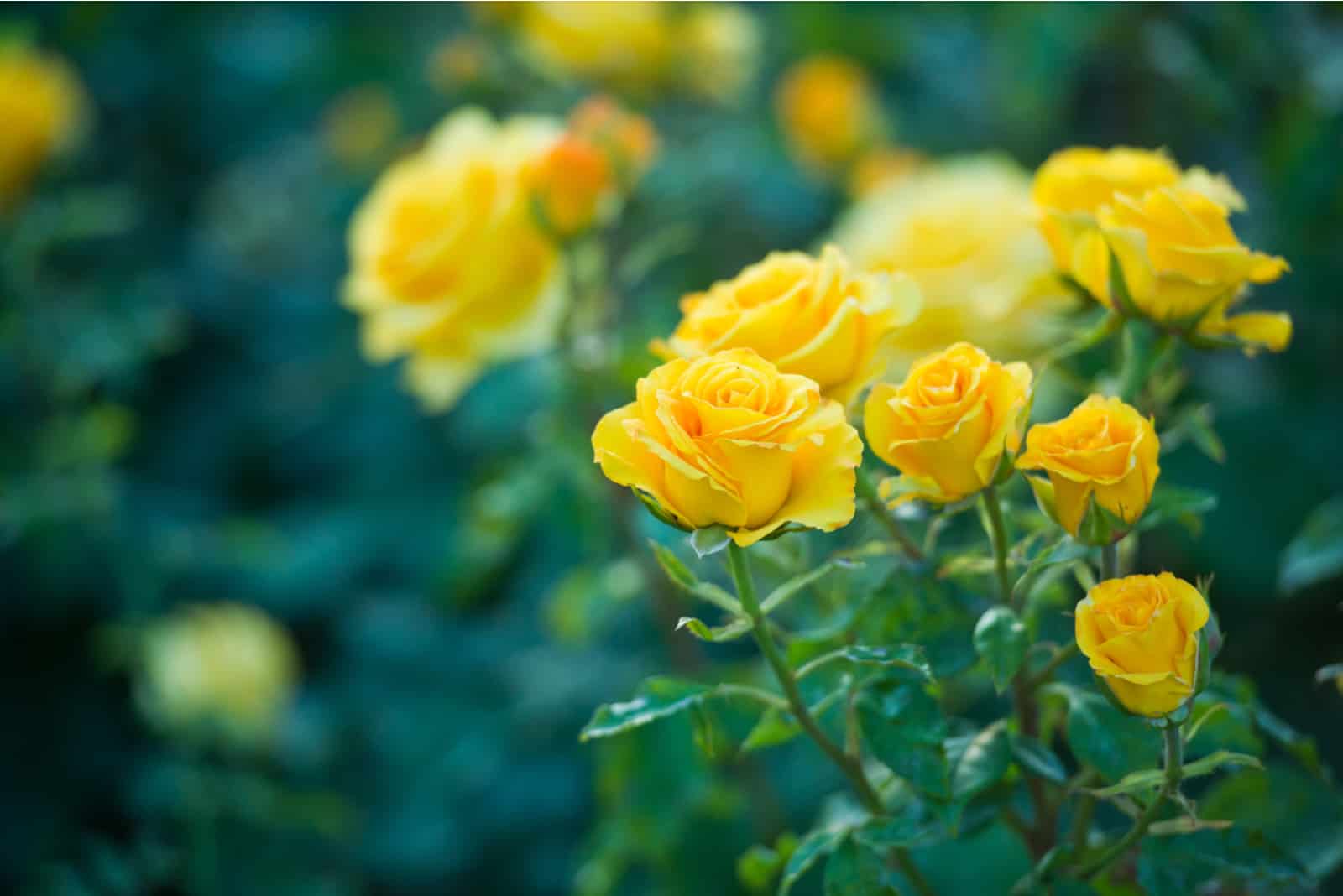Everybody loves roses, and growing them in your garden can be quite rewarding. They do demand extra care, especially when it comes to pruning.
However, that’s not everything that they need; you need to be careful about the location that you plant them in, the amount of water that you give them, and the type of soil that you choose.
But one thing that we don’t pay enough attention to is fertilization. Roses are heavy feeders, and they need plenty of nutrients and organic material to thrive.
Of course, we all love natural solutions, but sometimes, experimentation may lead to unwanted results, so it’s always better to question everything.
The main question of this article is: “Are coffee grounds good for roses?” We’ll answer this question in the following paragraphs, and we’ll bring you some guidelines for using coffee grounds, their benefits, and some potential problems that may occur.
Of course, you cannot feed these plants whenever you want, so we’ll discuss that issue as well, and we’ll talk about some other homemade, organic fertilizers that you can use if you find that coffee grounds don’t suit your rose bushes.
But before we dive into all of this, let’s look at the rose’s main specifics:
[table id=268 /]Are Coffee Grounds Good For Roses?
Coffee grounds are good for roses, but they shouldn’t be the only fertilizer that you use. They are rich in nitrogen and can help with the vegetative growth of your plant, making its bush really rich.
However, they don’t contain phosphorus and potassium, so there wouldn’t be enough flowers for you to relish in if you just used these as your fertilizer.
Therefore, you should combine coffee grinds with other fertilizers, such as banana peels, eggshells, mushrooms, etc., as they have higher levels of the other necessary macronutrients.
It’s also important to know how to use coffee since you cannot just pour it, freshly brewed, onto your plant.
But not everything’s black and white; and while there are some potential issues with using coffee grounds, there are also many benefits, such as improving health, promoting healthy growth, repelling pests, and many more.
We’ll discuss all of these topics and give you some tips for growing roses in the sections below, and we’ll start with the basic question: “What NPK ratio do roses actually need?”
What NPK Do Roses Need?
There isn’t just one NPK ratio that promotes plant growth in roses. Instead, there are many fertilizers with different percentages of essential nutrients that work like a charm.
You should look for fertilizers with high phosphorus levels but don’t forget nitrogen and potassium. Rose fertilizers usually have NPKs of 6-9-6, 3-5-3, and 6-12-6, so look for plant food with a similar ratio.
Some fertilizers contain higher percentages of these nutrients, but you can always dilute them in water to avoid overfertilization. Of course, homemade and organic varieties have lower levels of macronutrients, meaning you can use them without worrying about fertilizer burn.
How To Use Coffee Grounds
Roses love coffee grounds, but they aren’t the only ones; there are many acid-loving plants, houseplants, and veggies, such as hydrangeas, azaleas, gardenias, and tomatoes, that benefit from this fertilizer.
Coffee grinds can be used in a variety of ways, but the most common ones are adding it to your compost heap or making a liquid fertilizer out of it.
Of course, you can simply spread them around the base of your plant and watch them repel insects and all sorts of pests that might otherwise trouble your plants.
In the paragraphs below, we’ll examine the coffee grounds compost and liquid fertilizer in more detail so that you don’t end up burning your plant or acidifying the soil too much.
Coffee Ground Compost
An excellent way of recycling coffee grounds is to add them to your compost pile. If you’re not a heavy coffee drinker, you can always ask your local coffee shops (or even Starbucks) to give you their used coffee grinds instead of just throwing them away.
The compost needs to be balanced, and you should add green and brown materials. Green products include fruit and vegetable leftovers, coffee grounds, etc. In contrast, brown materials are usually the woody parts of plants, leaves, straw, wood chips, etc.
Green materials ensure a high nitrogen content in the compost, whereas brown products aerate the compost.
It’s good to know how long it takes to make homemade compost so that you know precisely when you’ll be able to feed your roses.
After the coffee ground compost is done, simply mix it into the ground, and you’re done. If you don’t feel like disturbing the soil around your rose bushes, you can always use compost such as mulch and spread it around the base of your roses.
Coffee Ground Liquid Fertilizer
Making a coffee ground liquid fertilizer is rather simple. However, your plant cannot sip the same drink as you do, but if you prepare it correctly, it’ll get hooked up in no time.
Simply combine five gallons of water with two cups of leftover coffee grounds, and let it sit overnight. It is perfect for both garden and potted Roses and other plants.
Benefits Of Coffee Grounds For Roses
Coffee grounds are quite beneficial, but they still should be used moderately. By applying this fertilizer properly, you may help your plant to grow, improve soil drainage, increase soil acidity, attract earthworms, and even repel pests.
The following sections provide detailed explanations of these benefits, and you’ll learn how to help your Italian rose varieties flourish.
Promote Healthy Development
Coffee grounds help with the healthy development of roses as they are an excellent source of nitrogen.
Of course, too much nitrogen can cause issues, but if you use it in normal quantities, you can encourage stem and leaf growth. In return, the plant can photosynthesize more due to the increased numbers of green surfaces, and it will produce the necessary resources for further development.
For instance, yellow leaves can signify a nitrogen deficiency, and using coffee remains can help you to avoid dealing with this issue in another way.
On the other hand, coffee grounds don’t contain enough phosphorus and potassium to promote blooming as much as some other fertilizers, but they will keep your plant strong and ready for any hardships.
Improve Drainage And Aeration
Adding coffee ground compost into a growing medium improves the soil structure and makes it more draining and aerated.
Roses require a substrate that drains fast and doesn’t clog with water, and amending it with coffee grounds can help in this respect.
You can also use this ingredient for mulching your roses; the soil will retain a bit more water, so you won’t have to water them frequently.
Food Source For Worms
Coffee grinds are the ideal planting material for anyone who practices organic gardening. They are loved by many plants, and sunflowers benefit from coffee grounds fertilizer as well, since they can attract earthworms.
These worms feed on the coffee grounds and improve drainage and aeration, enrich the soil with nutrients, and increase overall soil structure in return.
The byproducts of this process are earthworm castings, which abound in minerals that plants need for healthy growth and development.
Repel Pests
Coffee grounds act as a selective material, attracting beneficial organisms and repelling pests and insects that may harm your roses.
The potent scent of coffee grinds keeps insects, such as beetles, mosquitoes, fruit flies, and even some pests, at bay.
You can also forget about your roses being half eaten by slugs and snails if you sprinkle coffee grounds at the base of your plant.
This DIY mulch has another benefit in addition to repelling pests and unwanted visitors. Adding some coffee grinds compost around your plant will prevent weed growth and significantly reduce the time that you need to invest to have beautiful rose plants in your garden.
Increase Soil Acidity
Finally, roses thrive in slightly acidic soil and prefer a pH of around 6.5. Coffee grounds don’t raise acidity too much, but you should still be mindful of the quantities that you use.
Roses cannot absorb minerals if the medium is too acidic or alkaline and will suffer from nutrient deficiency.
You can raise the acidity in many ways, but watering your plants with a coffee grinds liquid fertilizer can get you a long way.
Potential Issues Of Coffee Grounds For Roses
Nothing is good in large quantities, and the same goes for coffee grinds fertilizers.
This ingredient is rich in nitrogen, and too much of it may lead to large, wonderfully green bushes that don’t bloom. Roses need much more phosphorus than nitrogen to flower, so you don’t want to add too much of this nitrogen-rich fertilizer.
Also, if the nitrogen level in the plant is high, its resistance to pests can decrease and make it more susceptible to infestations.
Coffee grounds raise the acidity of the soil, and even though they’re beneficial when used moderately, this ingredient has the potential to make the soil too acidic for your Roses, especially if you’re using it as a liquid fertilizer.
But don’t be afraid to use coffee grinds; they promote new growth, keep your plants healthy and strong, amend the soil structure, attract earthworms, and repel undesirable organisms.
When Should You Fertilize Roses?
Even though roses are heavy feeders, you shouldn’t fertilize them all year long. Feed them during their growing season because that’s when they actively grow and can make the most use of additional nutrients.
You can start fertilizing your rose garden in early spring once all danger of frost has passed and you have noticed that your plants have woken from dormancy.
New plants need an extra bit of care, so add some slow-release fertilizer and bone meal to promote the healthy development of the root system.
After the initial fertilization, you should continue feeding your plants after each blooming cycle. However, always reduce the amount of fertilizer by half since that’s the best way to avoid overfertilization.
You can stop feeding roses about a month and a half or two months before the first frost but ensure that the last food that you give it is a slow-release fertilizer that is low in nitrogen. This method will prevent your roses from producing new growth, but that’s actually a good thing at this point.
New stems would be too delicate, unable to survive the winter, and would deprive the entire plant of the food and energy that is necessary for its survival.
You should feed established plants in early-to-mid spring with a nitrogen-rich fertilizer, and then add some slow-release plant food once the stems are 4–5 inches long.
4 Signs That Roses Need Fertilizer
Freshly cut roses can survive for a long time without water, but all the water in the world wouldn’t help them if you don’t feed them properly too.
If you don’t know whether you should feed your roses or not, you can always look for the signs of nutrient deficiency.
We’ll examine some of the most common signs that show that your roses are under-fed (and which mineral deficiency is causing this) so that you can fertilize your plant and have them growing and blooming like never before.
Leaf Discoloration
One of the first signs that shows that your plants are suffering from nutrient deficiency is the yellowing of their leaves. The most common cause of this symptom is a lack of nitrogen, but as this deficiency prolongs, the leaves will even become smaller.
Acidic soils make nitrogen unavailable to your plant, so don’t forget to check the pH level before planting. You can always add some lime to lower the acidity.
Potassium deficiency is also exhibited by yellow and brown leaves, but you’ll only notice these patches along the edges of the foliage.
A lack of magnesium or manganese causes chlorosis between the veins, and iron deficiency turns leaves yellow while the veins remain green.
Not enough sulfur will make the leaves paler, whereas phosphorus deficiency is portrayed by the bottom leaves turning purple.
Reduction In Size
Another common sign of a lack of nutrients in the soil is shrunk foliage. A nitrogen deficiency is the most common cause of the leaves reducing in size, but this symptom only appears when the state is far gone.
Not enough magnesium is quite common for sandy soils, and the leaves may also become smaller if there isn’t enough of this micronutrient.
Iron is an important mineral, and it doesn’t just cause the yellowing of leaves. The foliage will become smaller and smaller as the deficiency persists. If the growing medium is too alkaline, your plant won’t be able to absorb it, so monitor the soil pH closely.
Distorted Foliage
Deformed and withered leaves aren’t only unsightly; they usually indicate more serious issues that should be addressed as soon as possible.
Even though withered foliage may indicate underwatering or exposure to too much sunlight, you’ll know if those are the causes of this issue.
If not, the chances are that your rose probably doesn’t have enough calcium, zinc, or boron. Even though these nutrients aren’t the most important ones, your plant still needs them for healthy growth.
Therefore, make sure you get fertilizers with these minerals in as well, or simply use some eggshells to raise calcium levels, bone meal for zinc, and some boron fertilizer.
If your soil is already poor in boron levels, you should amend this before planting because it’s usually too late to apply it once you have noticed the symptoms.
Scorched Tips
There are many excellent rose quotes on Instagram, but none of them include information about burnt leaf tips.
Therefore, make sure to do everything in your power to enjoy the rose blooms in your own yard. Mixing organic matter and some fertilizer into the soil is pretty helpful, but you should also monitor your plant and listen to what it tells you.
Burnt tips usually mean that the temperature and sun exposure are too much for your plant to handle, but a lack of certain nutrients is a more sinister problem that can also lead to this issue.
A molybdenum deficiency is a nutrient lack that causes scorched tips and the wilting of the youngest leaves.
The lack of this mineral in the growing medium is caused by a low pH, so adding some lime will make the soil less acidic, and the molybdenum will be available for absorption.
What Happens If You Water Roses With Coffee?
Most roses thrive in mildly acidic soils with a pH of 6.5, and if you alter this, your plant won’t be able to uptake the nutrients that it needs to develop healthily.
Coffee is very acidic, and its pH level is between 5.2–6.9, it mainly depends on the type of preparation method.
Adding undiluted, brewed coffee to your roses will significantly lower the pH level, which may cause issues such as the yellowing of leaves, wilting of the foliage, and in extreme cases, death.
Other Homemade Fertilizers For Roses
There are some other fertilizers you can use in addition to, or instead of, coffee grounds, and we’ll check some of them out in the sections below.
Grass Clippings
You can use grass clippings in various ways: as mulch, add them to your compost, or make grass clippings tea.
Since the first two ways are self-explanatory, we’ll talk about making tea out of grass clippings; and it’s fairly easy.
You just have to fill one-third of a five-gallon bucket with clippings and soak everything in the water. Let the concoction sit for a couple of weeks, and remember to stir it from time to time.
Once the tea is made, dilute it even more in water, and then water your plants. The ratio should be 1:5 in favor of the water.
You should know that this fertilizer is rich in nitrogen, so don’t let it be your only way of feeding your roses.
Banana Peels
There are many ways of using banana skin as plant food. You can dehydrate them, crush them, and add the powder directly to the soil, or you can make some tea.
Bananas have enough potassium and calcium to help your roses remain healthy, and you’ll be recycling them, so it’s a win for the environment and your plants.
Fill a glass or any container with banana peels and cover them with water. Let them soften up and sit in the water for a couple of weeks.
Once the tea is ready, remove the banana peels, and use the liquid to fertilize the plants. You should dilute 1 part of banana peel tea in 5 parts of water so that you don’t accidentally add too much potassium.
Manure Tea
Manure tea is an excellent way to give your plants everything that they need, but its NPK depends on the type of manure that you use. For instance, chicken manure can be up to 6-4-3, whereas the NPK of cow manure is usually 3-2-1.
Of course, you cannot use manure from your pets since your plants aren’t really fond of this.
Making manure tea isn’t complicated; fill a container with 1/3 manure and 2/3 water, and let it soak for about three days.
Stir it once or twice, and once it’s done, remove the solid particles, and the remaining liquid will be ready to use.
Dilute the manure tea in your watering can with a 1:5 ratio in favor of the water and feed your roses.
Q&A Corner
There are more questions about coffee grinds and the fertilization of roses in general that we haven’t answered, so we’ve picked a few interesting ones that you asked us.
We’ll answer them in the following paragraphs, so bear with us for just a little bit longer.
Which plants do not like coffee grounds?
Coffee grounds make the soil acidic, and the plants that don’t prefer this are asparagus fern, geranium, Chinese mustard, etc.
Not all plants love acidic mediums, so research your plant’s needs before planting it to see if any amendments should be made.
Do you need to water roses after using coffee grounds?
Yes, you should water the roses after using coffee grounds. In fact, you should always water your plants after using fertilizers, as this allows for an equal distribution of nutrients and makes them available to your plant.
Are eggshells good for roses?
Yes, eggshells are quite beneficial for roses as they are an excellent source of calcium, which strengthens the cell walls of your plant.
You can dehydrate the eggshells in the oven or under direct sunlight, and once they’re completely dry, you can crush them and sprinkle some at the base of your plant.
Final Thoughts
Now you know the answer to the question: “Are coffee grounds good for roses?” and some other closely related questions too.
We brought you some ways to use coffee grinds when feeding your plants and discussed their benefits and some possible issues that your plant might experience when using this fertilizer.
Roses love additional food sources, but not even they can be fertilized all the time, and that’s why we talked about the ideal times for feeding your rose bushes, as well as some of the signs that show that your plants need more fertilizer.
Finally, coffee grounds aren’t the only organic fertilizer your can use for your roses. We presented three of our favorites that you can combine with coffee grounds or use on their own.
Now we can only wish you good luck with your roses, and until next time!
Like this post? Share or pin it for later!

